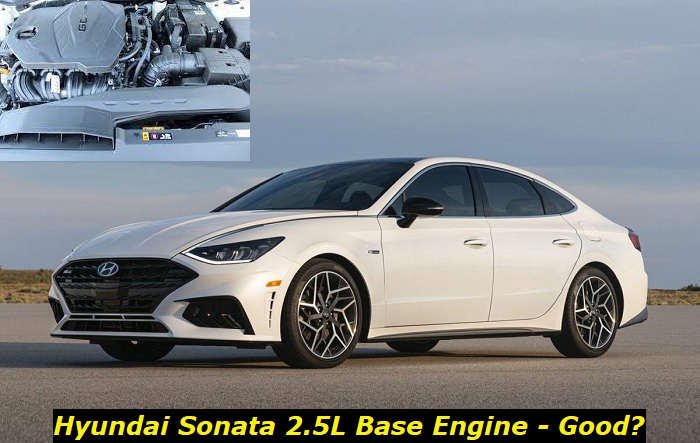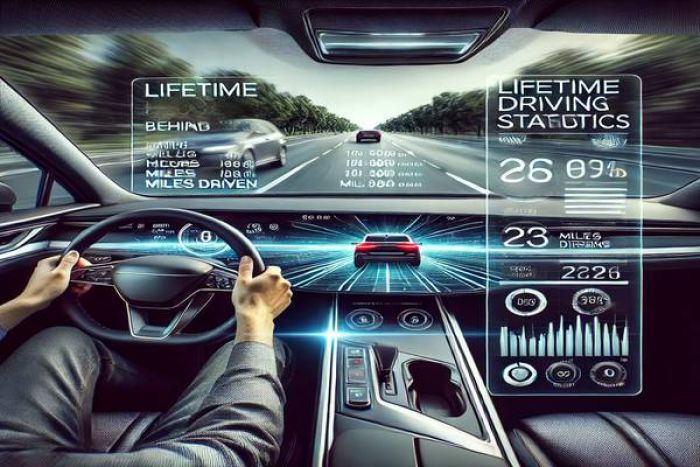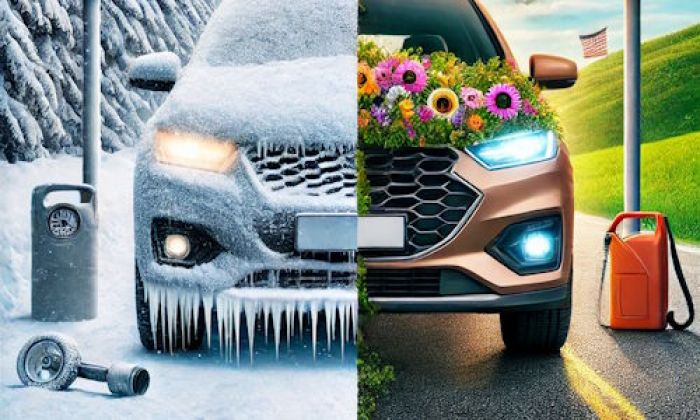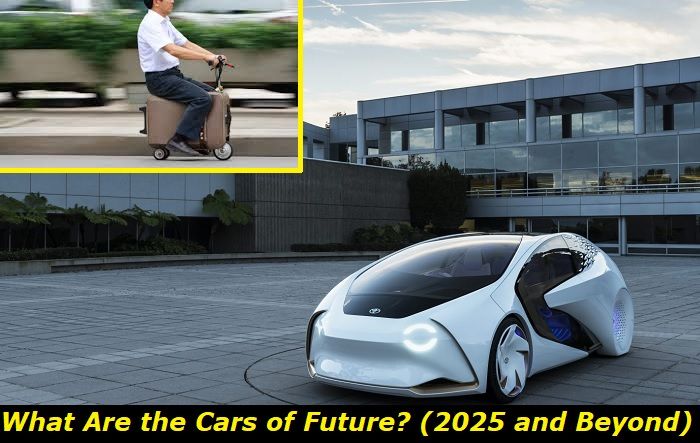Hyundai Sonata lives through probably the worst period of its life selling only about 50,000 cars in the US in 2022. A decade ago, Sonata was consistently selling over 200,000 cars a year in the US and was one of the leaders in the class of family sedans. But still, we see a huge interest in this vehicle and we are going to tell you why its base version is not bad at all.
Today, we are going to tell you about the base 2.5L non-turbo engine in the new Hyundai Sonata. We'll cover its problems, lifespan, and other important features. Also, we'll tell you if this option is worth your money or if you should find something else among the four available powertrains in the Sonata (including the Hybrid version).

Key facts and my opinion about the engine
- Production years: 2019-now
- Average lifespan of G4KN: 180,000-200,000 miles
- Fuel supply type: combined injection (GDI+MPI)
- Power range: 194 hp
- Fuel efficiency: above average
- Engine block material: aluminum
- Engine reliability score: medium
- The most common problems: catalytic converter destroying the cylinders, unknown lifespan of the thermostat, lifters require only good oil.
The 2.5L non-turbo engine in your new Sonata - what should you know?
It's quite hard to figure out which exact version powers the modern Sonata in the USA but we are pretty sure it's the freshest G4KN engine that features a certain improvement over the other version of the 2.5L Smartstream and also some gain in power. So, this is anyway the Smartstream family engine that offers pretty much power with no turbocharging and with more or less reliable technologies.
The engine is not bad - it feels quite OK for this vehicle. If you don't like the 1.6 Turbo version for its loud work and a lot of vibration, the 2.5L non-turbo base engine will be the right choice for you. Unless you have some spare money and want to pay for the top-notch trim powered by the 2.5L T-GDI Smartstream engine which is turbocharged and just crazy.
Let's see what the non-turbo 2.5L Sonata engine has to offer:
- this is the 4-cylinder G4KN engine with 2.5 liters of displacement, 191 horsepower, and 181 lb-ft of torque - pretty good for this car;
- the engine is paired with eight-speed automatic transmission and only offers front-wheel drive with no options (no AWD in this car at all);
- the head and the block are both aluminum, of course, it has the chain-driven timing system which is reliable but still, the chain will have to be replaced;
- phasers are used in both camshafts, so they may cause some problems in high-mileage engines, but no we didn't find any reports;
- the engine has the combined MPI plus GDI injection (port and direct) and this will help the engine get rid of carbon buildup problems;
- the engine is extremely economical - it's claimed to go up to 28 MPG in the city and 38 MPG on highways which is ridiculously good;
- this is not the engine for sporty driving - it will take you from 0 to 60 mph in about 7.8 seconds and it's not too fast, we should say.
There is nothing we can tell you now about the engineering problems or some weak links in this engine because it was only introduced in 2019. Previous engines of this type were criticized for bad carbon buildup on valves and also for injection problems. But we know this one is equipped with combined injection and these issues shouldn't bother Sonata owners again.
We really like how this engine goes. It's not too fast but you are buying a family sedan and aren't supposed to compete with Ferrari cars out there. When it comes to consumption, noises, vibrations, and responsiveness, we can't say anything bad about the base 2.5L engine in the Sonata. It's a solid option for those who want a lot of advantages for limited money.
What's the life expectancy of the 2.5L non-turbo engine in the new Sonata?
Well, it's too soon to estimate the lifespan of this engine because only a couple of them hit a 100K-mile mark now. But we can say for sure that this will not be the most reliable and durable engine in your life. The manufacturer thought more about the power, fuel consumption, and, of course, ecology limitations than about the longevity. So, some engineering solutions in this engine are just not for durability.
We believe the average lifespan of the base 2.5L Smartstream engine in the new Hyundai Sonata should be around 140,000 miles. Why so short? Because the engine is going to have problems with the timing system, camshaft phasers, lubrication, injection, ecology equipment, etc. We believe these issues are going to make it financially bad to drive your Sonata after it hits 140,000 miles.
Of course, some well-maintained Sonatas will hit much better mileage marks but we are talking about the average lifespan. And we are pretty sure, some owners will have to repair or replace these engines even earlier than they go 100,000 miles. Unfortunately, modern technologies of internal combustion engines are not about durability and reliability.
What are the common problems with the 2.5L base engine in the Sonata?
The new Sonata comes with some problems. We've checked what people write online and we were shocked by the lists of 15 or 20 most common issues with these vehicles. Never seen so long problem lists for new cars before. But if you check out those lists, you will see some minor issues that don't influence the longevity or the comfort of your vehicle.
The engine problems though are not s forgiving. Some of them can make you sell your vehicle much cheaper than you bought it and lose a lot of money. Or pay thousands for repairs. So, let's see what common problems can happen with the new Sonata under the hood.
1. Minor issues with phasers and other technologies
Manufacturers tend to make modern vehicles as efficient and economical as possible. Not because they think about your wallet. They just want their engines to be alive as long as possible and fit into the new ecology standards all over the world. So, all these super technological phasers, oil pumps with electronic control, etc. can provoke some problems.
We should say that this Hyundai engine appears to be really expensive to maintain and repair. So better react to any minor issues immediately and have the engine checked and repaired as soon as possible. All these minor issues grow into huge and expensive problems.
2. Catalytic converter too close to the block
This is the traditional Hyundai problem. A lot of older engines had this issue, too. The catalytic converter is really close to the block. So when the converter goes bad and the ceramic element inside it falls apart, some pieces of this ceramic filter may get into the block and scratch it. This will make you pay thousands for repair or even for the replacement of the engine block. Fortunately, OEM Hyundai cats can live about 120,000 miles or longer.
3. Thermostat issues
Even now we see people reporting about their thermostat problems in the 2.5L Hyundai Sonata engines. The problem is usually with the electronic part that controls the work of the unit. Once it glitches, your engine may start overheating or heating up for too long. The fuel consumption increases and also there is a risk of engine death if the overheating is not noticed immediately.
4. Timing chain issues
The chain is claimed to live as long as the engine. But we would suggest you change it at 100,000 miles if you still want to drive your Sonata for some time. The chain may break or stretch after this mileage and it will obviously hurt the engine. It all depends on your luck, but in most cases, the problems will be very bad and expensive to repair. So, just change the chain and the tensioner at 100K miles to avoid these issues.
What should you do to drive the new Sonata longer?
This vehicle is great in terms of driving experience, so we aren't surprised you want to prolong its life. Just keep up with these simple tips to make the 2.5L G4KN engine work longer and better:
- keep up with oil change intervals and buy new filters every time you change the oil;
- address all minor problems immediately, don't wait till they become huge and hard to solve;
- forget about aftermarket parts and fluids - use OEM products for your Sonata;
- replace the timing chain at 100K miles and inspect the thermostat and oil pump every 30,000 miles;
- watch the engine temperature and never drive an overheated 2.5L engine even a mile.
You will need to invest some time and money in this car to make it work properly. But you will also get better quality of driving and will be able to spend less money on fuel than with most competitors on the market. So, we don't see any reasons to reject this engine. In comparison with all modern engines in family sedans, this one doesn't seem that bad even though it has its share of problems.
About the authors
The CarAraC research team is composed of seasoned auto mechanics and automotive industry professionals, including individuals with advanced degrees and certifications in their field. Our team members boast prestigious credentials, reflecting their extensive knowledge and skills. These qualifications include: IMI: Institute of the Motor Industry, ASE-Certified Master Automobile Technicians; Coventry University, Graduate of MA in Automotive Journalism; Politecnico di Torino, Italy, MS Automotive Engineering; Ss. Cyril and Methodius University in Skopje, Mechanical University in Skopje; TOC Automotive College; DHA Suffa University, Department of Mechanical Engineering






Add comment